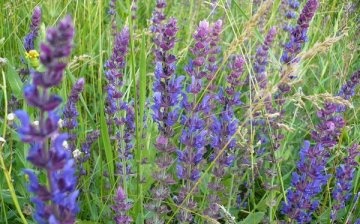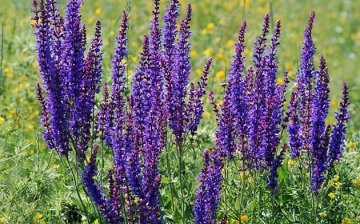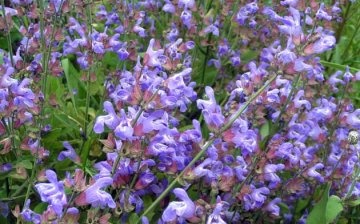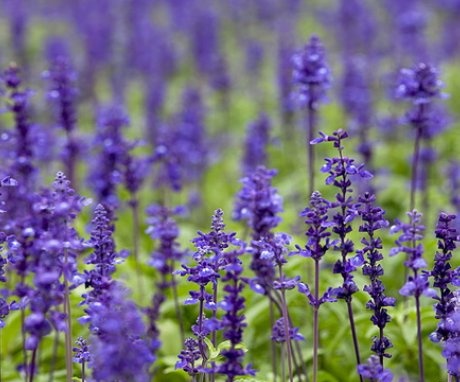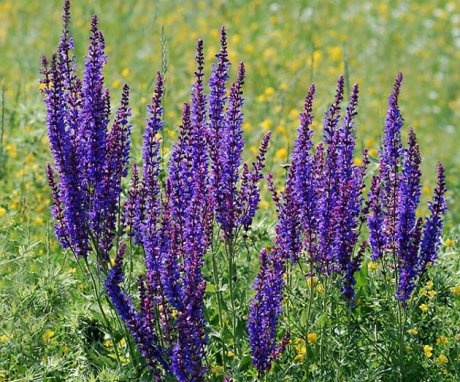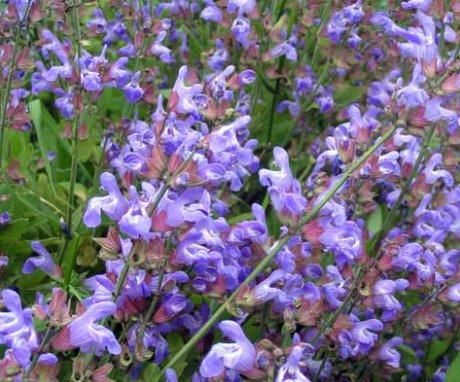Sage: photo, planting and care
Each of you saw sage at least in the photo. This beautiful plant, no more than 15 cm in height, looks very much like the spikelets that grow above the foliage. They are usually blue or white flowers with medicinal properties. Modern breeders have developed varieties with red, purple, violet and pink flowers that serve as a decorative function.
Content:
The medicinal properties of the plant have been known for a long time. It has astringent, anti-inflammatory and disinfectant properties. Therefore, it is often recommended to use sage decoction for stomatitis and diseases of the upper respiratory tract.
Sage. Description and useful properties
Sage is a perennial bush with a straight stem, narrow pointed leaves and small, spike-like inflorescences. Sage blooms in the first half of summer. The plant is unpretentious, easily tolerates frost and summer drought.
The plant is rich in tannins, essential oils, vitamins, phytoncides and mineral salts. It is recommended to use it for pneumonia and tuberculosis, bleeding and rash. Sage helps to cope with diseases of the throat, kidneys, stomach and intestines. In addition, it reduces the activity of sweat and mammary glands, stops inflammation and relieves pain.
Sage has also found its use in cooking. It is used in any form as a bitter and pungent spice in small quantities. It is added to various sauces, salads, meat, poultry and fish dishes. Sage leaves are used to make cookies and some spicy drinks.
For medical purposes, infusions, compresses, lotions are made from sage. It is added to baths and inhalations. There is sage toothpaste that has astringent properties.
In addition to medicinal sage, there is also clary sage... In medicine, its leaves and inflorescences are used. The healing abilities are very similar to salvia officinalis... Agricultural technology is the same.
Grow sage not difficult at all. Even a novice gardener can handle this.
How to plant sage
Sage is grown both in the plots and at home in pots. Plant propagates cuttings, seedlings and seeds. The easiest way is seed.
The place for sage should be sunny, not low-lying and always away from dusty roads.
If you are going to grow sage on your site, pay attention to the soil in which the seeds will be sown. The plant loves moist, well-drained, nutritious and non-acidic soil. Therefore, in the spring, before planting, the site must be dug to the depth of a shovel, carefully freed from weeds and nitrogen fertilized. You can also add well-rotted manure, compost, fine sand to the ground. Such activities will enrich the soil with nutrients.
In April, seeds are sown to a depth of no more than 2 cm and the ground is lightly rolled. A distance of about 50 cm must be left between the rows. Three weeks later, the first shoots appear. In order for the plants not to interfere with each other's growth, it is necessary to thin them out immediately. It is advisable to leave a distance of 30 cm between plants.
If you use the seedling method, then remember that the seedlings are planted in the ground at the age of 40 days, when it already has 3-5 true leaves. The first month after planting, the plant is watered, the beds are loosened and weeds are removed.In the fall, phosphorus-potassium fertilizers are required.
Already in the first year, at the beginning of flowering, sage leaves can be harvested. The growing shoots are cut 2-3 times over the summer.
Plant care
Gardeners are very fond of sage for its unpretentiousness. The plant does not require special care, practically does not need watering. Salvia officinalis will grow well in any conditions, it is enough to weed the beds from weeds three to four times per season and loosen the aisles.
Sage bushes are classified as drought-resistant plants, therefore to water it is needed in moderation. He does not tolerate strong waterlogging of the soil. But a constant lack of moisture can destroy the plant. It can lose its medicinal properties, and its leaves will become tough and unsightly.
In the first few weeks after planting, it needs abundant watering. Further, the need for watering can be determined visually. If the flower withers, it needs to be watered a little.
To make sage bushes more luxuriant, experienced gardeners recommend rejuvenating them every year in early spring. For this, last year's stems are cut at a height of about 5 cm from the ground. When the plant grows, more young shoots are formed from which leaves can be collected.
The leaves are harvested several times over the summer, washed, dried and left for the winter. There is nothing more pleasant and healthier than on a cold winter evening, wrapped in a warm blanket, drinking fragrant tea with sage, which will give the body a lot of useful substances and help to cope with many ailments.



